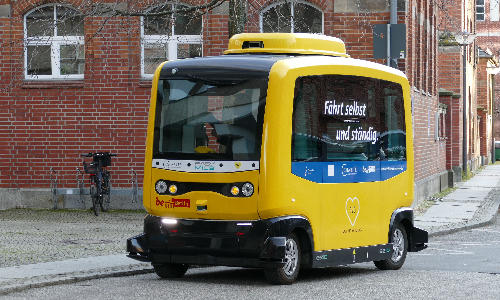You might be forgiven for thinking that truly autonomous vehicles are further away than ever. Just a few years ago it seemed they were everywhere in the media, then there were some very unfortunate accidents, and now things seem to have gone rather quiet.
However, this is pretty typical for any technology – in fact there’s even a name for it, the Gartner Hype Cycle. After the initial hype, we’ve just been through the ‘trough of disillusionment’, but I think we’re probably now climbing the ‘slope of enlightenment’, which is when companies work out how to actually make money from a new idea.
The thing is, fully driverless cars probably still are a very long way off, but most of the really useful applications don’t need ‘full’ autonomy. I need to get a bit more specific here – there is a generally accepted definition of the levels of autonomy which runs from zero (no autonomy) to five (full driving automation).
Levels of driving autonomy:
Level 0 – No driving automation
Level 1 – Driver assistance
Level 2 – Partial driving automation
Level 3 – Conditional driving automation
Level 4 – High driving automation
Level 5 – Full driving automation
So, lots of cars now have level 1 or level 2 – lane assist, cars that park themselves, adaptive cruise control. A few cars, most notably Teslas, have level 3, which is where the car can carry out all the functions of the driver, but the driver has to be ready to take over at any time. Let’s face it, level 3 is problematic, because if you put your Tesla into self-driving mode, it’s going to be really hard to carry on paying attention to the road 100% and be ready to jump in at the moment the computer encounters something it can’t handle. I think it’s amazing how few accidents there have been in practice at this level.
The really crucial step for finding commercial applications for autonomous vehicles is the jump from level 3 to level 4. Level 4 is where the vehicle can be ‘trusted’ without a driver, but only in a restricted range of circumstances. Level 4 is also where you can start to make money if it’s some kind of commercial vehicle, because you can remove the driver altogether.
By contrast, level 5 is a vehicle that can drive itself anywhere. Level 5 is still a long way off, because ‘anywhere’ means an almost infinite range of situations your vehicle might encounter, and that means you can pretty much guarantee the vehicle will have to deal with a situation that you can’t anticipate and give it rules to deal with. But getting to level 4 is much easier because you can narrow down that range of possible situations.
There are lots of applications for commercial vehicles that don’t need to go outside a specific environment. I’ll look at a number of them in upcoming instalments of this blog – ports, motorways, industrial estates, farms, to name just a few. I’ll look at the possible implications for how we organise our transport systems, for drivers, and for the environment. Watch this space.
References:


For some reason, I have not been seeing your blog posts via email until today’s hydrogen piece. So I’m now in catch-up mode!
I think HMG and Oxon CC are running trials of ‘autonomous’ shuttles on the Milton Park campus near Didcot. Is this your Level 4 in practice?
https://www.miltonpark.co.uk/news/uk-s-first-electric-autonomous-bus-at-milton-park/
Yes, that’s exactly the sort of thing. I’ve got a few more posts planned with examples of level four applications – agriculture, freight interchanges, platooning. Watch this space!